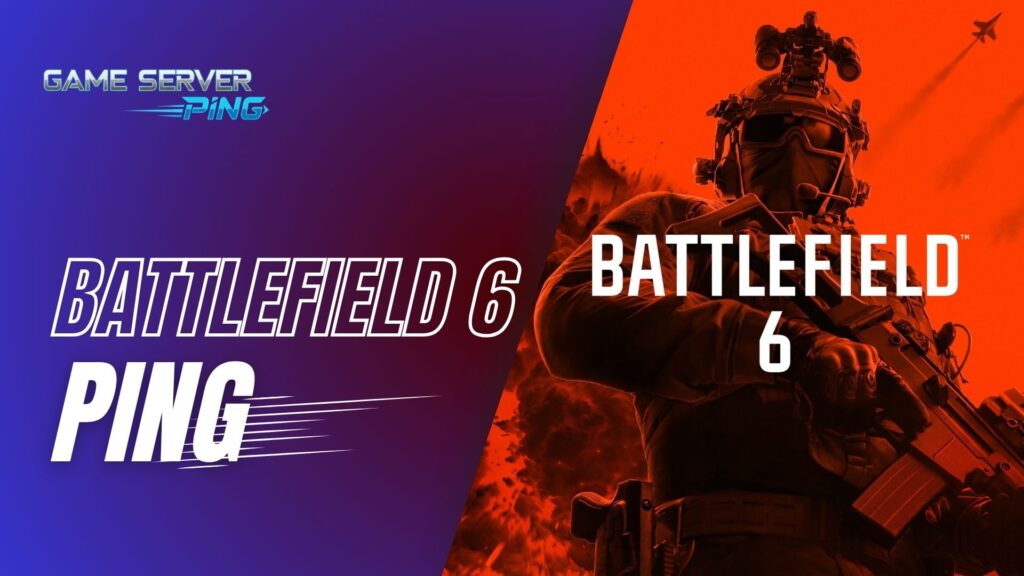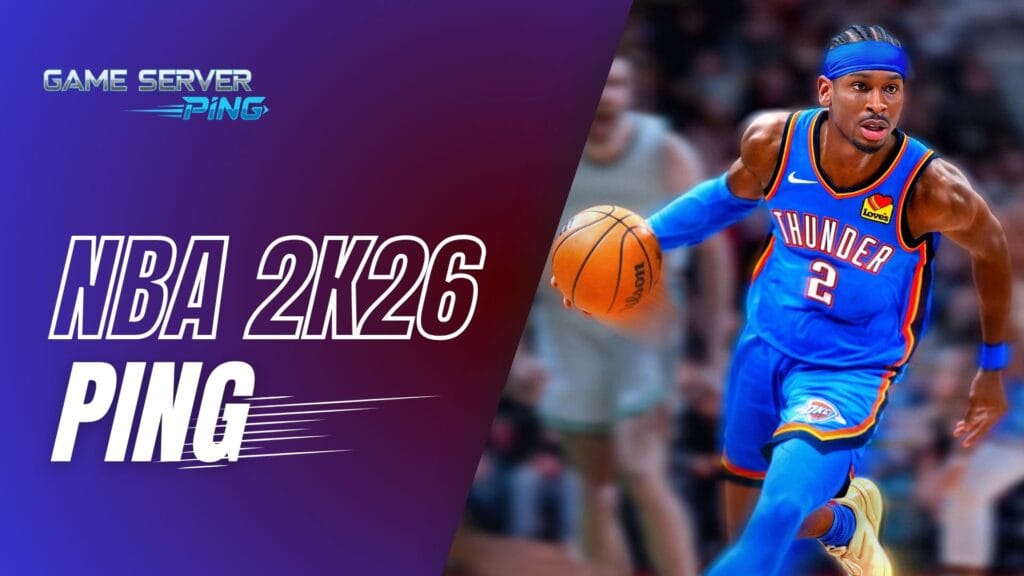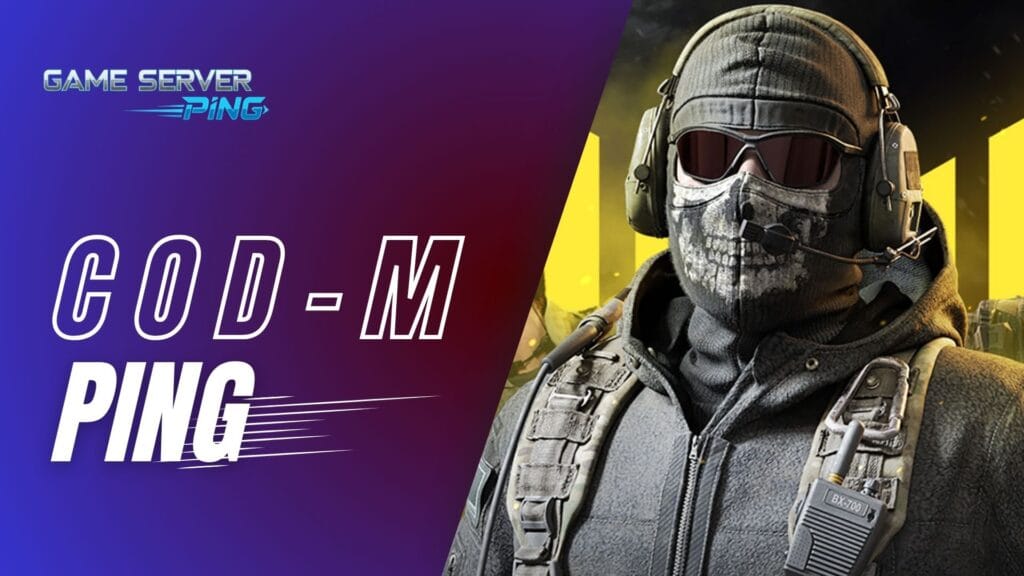Now Reading: League Of Legends (LOL) Ping Test Live – Check All 12 Regions
- 01
League Of Legends (LOL) Ping Test Live – Check All 12 Regions

League Of Legends (LOL) Ping Test Live – Check All 12 Regions
If you’ve been grinding League of Legends for a while, you already know the truth—ping can make or break a game. There’s nothing worse than going for that perfect outplay, only to have your champ freeze for half a second because your connection decided to spike. I’ve been there more times than I’d like to admit, and that’s why I never queue up without first checking my ping. A quick League of Legends ping test saves me from tilted matches before they even start.
Why League of Legends Ping Testing Matters for Smooth Gameplay
LoL is all about fast reactions. You flash in, drop your combo, and it all comes down to whether your inputs land when you want them to. The thing is, if your connection lags even slightly, that play goes from clean to disaster real quick. That’s why I test my ping before I hit ranked—because knowing my latency to Riot’s servers tells me if I’m good to go or if I need to fix something before risking LP. Honestly, it’s the same reason I’ll run an internet speed test for online gaming when I feel something’s off. It’s just part of making sure the setup is ready.
Check League Of Legends Ping Test Live
League of Legends Ping Test
Use this free League of Legends Ping Test tool to check your latency to Riot’s official AWS servers across regions including North America, Europe, Asia, South America, Middle East, and Oceania. See live ping, average latency, and jitter to find the fastest server for smooth gameplay.
 NA East (Virginia)
NA East (Virginia) NA West (Oregon)
NA West (Oregon) EU West (Dublin)
EU West (Dublin) EU Central (Frankfurt)
EU Central (Frankfurt) EU West (Paris)
EU West (Paris) South America (São Paulo)
South America (São Paulo) Asia (Tokyo)
Asia (Tokyo) Asia (Seoul)
Asia (Seoul) South Asia (Mumbai)
South Asia (Mumbai) SEA (Singapore)
SEA (Singapore) Oceania (Sydney)
Oceania (Sydney) Middle East (Bahrain)
Middle East (Bahrain)
Common Complaints: League of Legends Ping Spikes and League of Legends High Ping
Every LoL player has felt it—the sudden ping spike in the middle of a team fight. One second you’re sitting at a comfy 35ms, and then out of nowhere it jumps to 300ms. By the time your screen catches up, you’re either dead or the fight is already over. Then there are those games where your ping is just consistently high the whole match, no matter what you do. That’s the classic League of Legends high ping problem. For me, running a ping check before playing has saved a ton of wasted games because I can see right away if it’s my connection or if Riot’s servers are acting up.
How a Dedicated LOL Ping Test Tool Helps Players
The in-game meter is okay, but it doesn’t really tell the full story. A dedicated League of Legends Ping Test tool is way more reliable because it connects straight to Riot’s AWS servers across different regions. That means I can see which server is giving me the best latency before I even load up the client. It doesn’t just show raw ping either—I can check average latency, jitter, and even see color indicators so I know at a glance if a server is stable. And if you’re like me and play more than just LoL, you’ll appreciate that the same kind of tool exists for other titles too, like the Fortnite Ping Test, which I use when I’m switching between games on the same night.
Best Ping for LOL
When we talk about “best ping” in League of Legends, most players immediately think about getting the lowest number possible. While it’s true that a 20ms connection feels way smoother than 80ms, the real secret isn’t just about the number—it’s about stability.
For casual matches, anything under 60ms is considered playable, but once you step into ranked or competitive games, you’ll want to aim for below 35ms if possible. That’s the sweet spot where your abilities feel responsive, skill shots land exactly when you throw them, and you’re not blaming lag every time you miss a flash combo.
The League of Legends Ping Test tool makes this search easy by showing you real-time latency across multiple Riot servers. For example:
- If you’re in North America, Virginia often gives East Coast players 20–30ms, while Oregon works better for the West Coast.
- In Europe, Frankfurt is a favorite because of its central location, though Dublin and Paris are strong alternatives.
- For Asia, players in Korea or Japan often enjoy insanely low pings of 10–15ms to their local servers.
The important thing to remember is that the best ping isn’t the same for everyone—it depends on where you live and how your ISP routes traffic. That’s why running a quick ping test before your gaming session can make the difference between smooth gameplay and a laggy nightmare. If you’ve ever suffered from League of Legends ping spikes, you already know how much of a game-changer this can be.
I’ve even compared results with other tests like a general internet speed test for online gaming, and the LoL-specific tool feels more accurate because it focuses only on Riot’s AWS servers. If you want to see how it works for other titles too, the Fortnite ping test is another good benchmark.
At the end of the day, the best ping for LOL is one that’s consistently low and stable. Even 40ms steady is better than 20ms that keeps spiking to 100. Stability wins games, not just raw speed.
What This Tool Does Without Overcomplicating It
The beauty of the LOL Ping Test tool is that it just works. No need to mess with command prompts or type in IP addresses. You hit the button, and it instantly pings Riot’s servers in different regions. That way, you see exactly what your latency would be if you played there. I use it before queuing up ranked, especially if I’m switching from Wi-Fi to Ethernet or playing on a different setup. It’s like a pre-game warm-up—but for your connection.
Real-Time Latency Tracking vs. In-Game Indicators
Here’s the thing: the in-game ping meter isn’t useless, but it doesn’t always tell the whole story. In LoL, that little number can look stable, but meanwhile, you’re experiencing weird input delay or stuttering. That’s because the in-game counter just gives you a snapshot. The ping test tool, on the other hand, actually tracks your latency in real-time while sending multiple requests, so it picks up spikes and instability. That’s why I trust it more—if it shows red or unstable results, I know it’s time to reset my router or switch connections before I even risk my LP.
And honestly, I’ve found it super handy when comparing other games too. For example, when I checked my connection on the Valorant Ping Test, the numbers lined up almost exactly with what I got in matches. That kind of consistency is what makes me rely on these tools before I start gaming seriously.
Server Coverage in the Ping Tool
Riot’s Use of AWS Servers for Global Stability
Riot doesn’t just throw random servers around the world—they actually partner with Amazon Web Services (AWS). That’s why League of Legends feels stable in most regions. AWS has data centers everywhere, and Riot taps into them so players from NA, EU, Asia, and beyond can connect without too much packet loss. When you use the LOL Ping Test tool, you’re not just guessing—you’re pinging the same AWS-powered servers Riot uses for real matches.
North America Servers (Virginia, Oregon)
Most NA players hit the Virginia servers, but Oregon is also there as a backup region. East Coast players usually get the dream latency—20–40ms—while West Coast might lean on Oregon for better stability. I’m on the East, so I’m lucky, but I’ve seen West Coast friends pull better numbers by testing both.
Europe Servers (Dublin, Frankfurt, Paris)
Europe is stacked with coverage. Dublin, Frankfurt, and Paris are all options, and honestly, it depends where you are. German players usually swear by Frankfurt since it’s central, while Western EU might see Paris as their best bet. The ping tool makes it easy to check all three so you don’t just assume—you know.
South America Server (São Paulo)
If you’re playing from Brazil or nearby, São Paulo is your main hub. It’s the go-to Riot server for South America, and when I tested from a VPN there, ping sat around 30–40ms. Not bad at all for locals, but further south, numbers start creeping up.
Asia Servers (Tokyo, Seoul)
This is where League feels insanely smooth. Tokyo and Seoul servers are known for lightning-fast gameplay, which is why so many highlight clips seem so clean. Korean players especially have that near-zero delay advantage. If you’re nearby, the tool will show just how insanely low ping can get—sometimes even single digits.
South Asia Server (Mumbai)
For players in India and the surrounding region, Mumbai gives the best connection. Before Riot added this server, players had to connect to Singapore or EU, which meant 100+ ping. Now, thanks to Mumbai, many South Asian players enjoy latency under 50ms if their ISP holds up.
Southeast Asia Server (Singapore)
Singapore has always been the lifeline for SEA players—Philippines, Malaysia, Indonesia, and others. The pings vary depending on distance, but Singapore remains one of Riot’s strongest hubs in the region. When I tested, the numbers were super consistent, which is huge for games like LoL where sudden spikes ruin your lane trades.
Oceania Server (Sydney)
OCE players get Sydney, which covers Australia and New Zealand. I’ll be honest—it’s a bit of a rough one since OCE is so far from everything else. Even then, Sydney keeps matches playable for the local crowd, usually around 30–50ms if you’re in Australia. NZ players usually add 20ms on top of that.
Middle East Server (Bahrain)
One of Riot’s newer setups, Bahrain serves the Middle East. Before this, players had to connect to EU or Asia, and that meant 100–200ms minimum. Now, with Bahrain live, players in Saudi Arabia, UAE, and nearby countries finally get closer-to-fair latency. Testing this region with the tool can be a game changer if you’re tired of playing cross-continental with high ping.
Real-World Use Cases
Players Facing League of Legends High Ping at Peak Hours
We’ve all been there—you queue up after dinner, ready to grind some ranked, and suddenly your normally stable 40ms jumps to 120ms or worse. Peak hours hit hard because ISPs get congested, and Riot’s servers handle way more traffic. I’ve had nights where the difference between playable and unplayable was just checking the ping test tool before locking in. If it showed my connection was unstable, I’d wait it out or swap networks instead of risking LP.
Checking Before Tournaments or Ranked Sessions
Serious players know you don’t gamble with ping before tournaments or promos. I remember playing in a small online tourney once—if I hadn’t tested beforehand, I would’ve walked in blind and eaten packet loss mid-match. The ping test tool is like your checklist: mouse, keyboard, headset, connection. It gives peace of mind knowing your setup won’t betray you mid-fight.
Switching Servers for Lower Latency Matches
Sometimes your default region isn’t the best. I had a friend in Eastern Europe who always played on EUW, but his ping was shaky. After running the tool, he realized Frankfurt gave him way smoother games than Paris. Switching servers gave him a huge edge—no more delayed Flash combos. The tool makes it super easy to spot these hidden advantages that you’d never notice if you just stuck to the default.
Comparing Stability Between Multiple Regions
This one’s underrated. It’s not just about which server has the lowest ping—it’s about which one is most stable. For example, I tested Singapore and Mumbai from a VPN once. Singapore gave me 50ms, Mumbai gave me 55ms—but Singapore had way more spikes. If I had only looked at the number, I’d have picked Singapore. But with the tool showing stability, Mumbai was the smarter choice. Sometimes, a slightly higher but consistent ping feels way better than a jumpy low one.
Advanced Insights for Competitive Players
Why a Stable Ping Matters More Than Raw Speed
Here’s the thing: everyone brags about having “fast internet,” but in competitive League, raw speed (like 500 Mbps vs. 100 Mbps) doesn’t matter nearly as much as stability. I’d rather play on a steady 40ms all day than deal with a 20ms that spikes to 80 every few seconds. Stability means you can trust your Flash + Ult timing, your skill shots land when you click, and you won’t lose trades because your champ stuttered for half a second. Competitive players live and die by consistency, not headline download speeds.
Latency Variations Across Regions
Not all Riot servers are created equal. Even if two regions look close on the map, the routing can make one way better than the other. For example, some Middle East players actually get lower latency to EU servers than Bahrain depending on their ISP’s routing. I’ve also seen North American players on the West Coast get better numbers to Oregon than Virginia, even though Virginia is technically the “main” server. That’s why testing multiple regions matters—you never really know which route your ISP is prioritizing until you check it yourself.
When to Contact ISP vs. When to Switch Servers
This is the eternal question: “Do I call my ISP or just switch servers?” If your ping is consistently high across every region you test, that’s an ISP issue—your provider might be routing traffic inefficiently or throttling during peak hours. But if one region looks terrible while another nearby one is fine, that’s a server-routing mismatch, and the smarter move is to just queue on the better-performing region. Competitive players save themselves a ton of stress by knowing the difference instead of wasting time yelling at customer support for something a server switch could fix in seconds.
How accurate is the League of Legends Ping Test tool compared to in-game ping?
It’s very close, but not always identical. The tool sends multiple requests to Riot’s AWS endpoints and averages the results, so it smooths out spikes and gives you a more stable reading. In-game ping is more “snapshot” style and can fluctuate during actual match traffic.
Why does my in-game ping differ from the tool’s result?
A few reasons:
In-game traffic and server load can add overhead.
Your ISP’s routing or congestion might change mid-match.
Background apps might kick in once you’ve loaded the game.
The tool runs light, straight HTTP “/ping” calls, whereas the game has extra data, encryption, and server logic.
Can this tool help reduce League of Legends high ping issues?
Indirectly, yes. It helps you detect which server is optimal and whether your network is stable. Once you know which region gives you better latency or where jitter is minimal, you can switch or troubleshoot before you queue. But it doesn’t itself “fix” bad routing or ISP problems
Which server usually gives the lowest ping for Europe players?
Often Frankfurt or Dublin tend to yield good numbers for much of Western and Central Europe, but it depends on your country and ISP routing. Always test multiple EU servers with the tool to see which one is optimal for your location.
Why does the tool show “unreachable” for some servers?
That can happen if:
The server endpoint is currently down or under maintenance.
There’s packet filtering, firewall, or ISP blocks on that route.
DNS resolution failure or routing issues.
Temporary network outage.
How often should I test League of Legends ping before matches?
I’d say right before each session or patch—so every time you’re about to queue. Also during long breaks or if you switch Wi-Fi/ethernet or change routers. Doing it once per play session is enough unless you see problems mid-game.
Why do I get good ping on the tool but spikes in-game?
Because the game introduces additional overhead (data sync, voice, match logic). Also, during matches other network factors (updates, chat, anti-cheat, game events) might shift packets or cause momentary delays—even when your tool test looked clean.






![7 Reasons Why Fortnite Lags When Breaking Trees [Solved]](https://gameserverping.net/wp-content/uploads/2025/09/7-Reasons-Why-Fortnite-Lags-When-Breaking-Trees-1.jpg)







